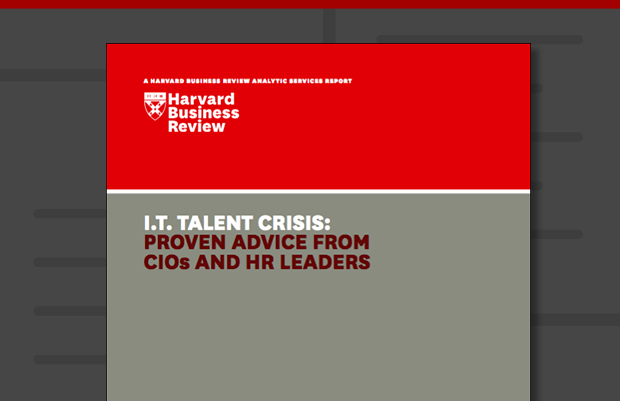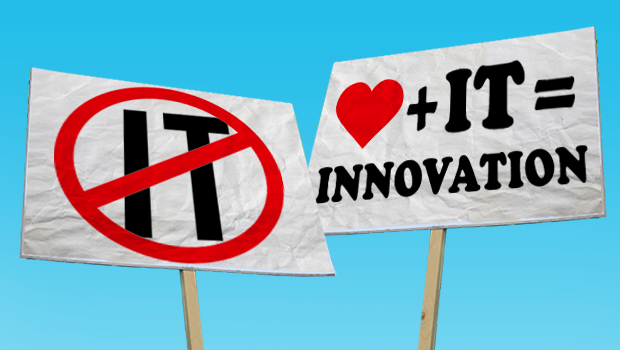A recent survey from job site Indeed found that 86 percent of the companies polled said they find it challenging to find and hire technical talent. What’s more, the time it takes to fill IT positions has increased, according to 75 percent of HR managers polled, and 53 percent admitted to hiring unqualified candidates just to fill immediate needs.
Most telling, however, is that 83 percent of those surveyed said that the challenges in hiring talented IT professionals have led to lost revenue, slow product development, sluggish market expansion, or tension on the IT team.
 With the competition for tech talent so fierce and real business outcomes on the line, finding ways to stand out can be critical to a company’s ability to attract the right IT candidates that meet their specific needs. This notion is echoed by Tammy Erickson, executive fellow of organizational behavior at the London Business School and a leading authority on the changing workforce. In a recent report from Harvard Business Review Analytics Services, she said, “When you’re competing for a very small pool, the question is how do you become the best place to work?”
With the competition for tech talent so fierce and real business outcomes on the line, finding ways to stand out can be critical to a company’s ability to attract the right IT candidates that meet their specific needs. This notion is echoed by Tammy Erickson, executive fellow of organizational behavior at the London Business School and a leading authority on the changing workforce. In a recent report from Harvard Business Review Analytics Services, she said, “When you’re competing for a very small pool, the question is how do you become the best place to work?”
The report, sponsored by The Enterprisers Project, goes on to highlight advice and stories from CIOs and HR professionals. When it comes to attracting the best talent, the report points to three qualities: mission, culture, and shared emotional experiences.
Mission
 Today’s top IT talent wants the opportunity to work with modern technology and interesting projects – but those alone are not enough. They also want the work to be challenging and meaningful, and they want to connect to an organizational mission they can feel passionate about. The HBR report points out that this is somewhat easier to do at, for example, the Weather Company, where IT knows they’re helping get alerts to people that could save their lives. At Monsanto, as another example, they’re feeding the world.
Today’s top IT talent wants the opportunity to work with modern technology and interesting projects – but those alone are not enough. They also want the work to be challenging and meaningful, and they want to connect to an organizational mission they can feel passionate about. The HBR report points out that this is somewhat easier to do at, for example, the Weather Company, where IT knows they’re helping get alerts to people that could save their lives. At Monsanto, as another example, they’re feeding the world.
But what about companies at which the societal connection isn’t as strong?
The report urges CIOs to find a way to identify the meaning, and make it explicit for those within IT. At SunTrust Banks, CIO Anil Cheriyan reinforces their mission to “light the way to financial well being” through storytelling and communication, as well as having IT team members get up close and personal with customers by visiting bank branches and listening to client calls. According to Cheriyan, “Every single thing we do from a technology standpoint is all about meeting clients’ needs, so our purpose has to be front and center in everyone’s mind.”
Culture
 “Not everyone has to have a ping pong table in the lobby,” Erickson said in the HBR report. However, a strong culture – whatever that may look like in your organization – is key to both attracting great talent and retaining the talent you have. How CIOs are achieving this is different from organization to organization. At the FCC, for example, CIO David Bray has created a culture of appreciation where, each week, the team circulates thank-you gifts to recognize above-and-beyond performers from the previous week.
“Not everyone has to have a ping pong table in the lobby,” Erickson said in the HBR report. However, a strong culture – whatever that may look like in your organization – is key to both attracting great talent and retaining the talent you have. How CIOs are achieving this is different from organization to organization. At the FCC, for example, CIO David Bray has created a culture of appreciation where, each week, the team circulates thank-you gifts to recognize above-and-beyond performers from the previous week.
For Stephen Gold, CIO of CVS Health, culture trumps everything else, and, specifically, he focuses on building a culture of accountability. He points out that in an environment where the percentage of IT projects that fail can be as high as 90 percent, cultural issues are often the culprit of projects going awry. Gold says, “Culture is a mechanism and a framework that regardless of the technology and regardless of the people, to some degree, creates corridors in which things can operate and be delivered safely and reliably.”
Shared positive emotional experiences
 Many CIOs are looking beyond the walls of their IT organization to team building activities that can bring individuals closer together through shared positive experiences. Alan Cullop, CIO at DaVita, a healthcare organization based in Denver, said in the HBR report that his team builds homes, cleans up parks, and works in schools with underprivileged kids, providing backpacks, school supplies, and outings to the park to learn about nature.
Many CIOs are looking beyond the walls of their IT organization to team building activities that can bring individuals closer together through shared positive experiences. Alan Cullop, CIO at DaVita, a healthcare organization based in Denver, said in the HBR report that his team builds homes, cleans up parks, and works in schools with underprivileged kids, providing backpacks, school supplies, and outings to the park to learn about nature.
At Vanguard, there is a Peer Recognition Award in which everyone in IT has the opportunity to nominate a peer for outstanding work and the chance to win a prize. CIO John Marcante says this helps to create a special connection among individuals on the team. He says, “We have a lot of awards at Vanguard, but I think this is special because the nominations come from peers. It’s one thing for your manager to recognize you, but you really need to be doing something right to have your team rally behind you.”
Download the Harvard Business Review Analytics Services report, “IT Talent Crisis: Proven Advice from CIOs and HR Leaders,” to learn more.






